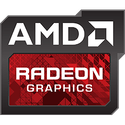
NVIDIA App Allegedly Degrades Gaming Performance by Up to 15%, But There Is a Fix
Recent testing has revealed that latest NVIDIA App v1.0 software utility may significantly impact gaming performance, with benchmarks from Tom's Hardware showing frame rate drops of up to 15% in certain games when the new NVIDIA App is installed alongside graphics drivers. The performance issues appear to be linked to the application's overlay features, particularly its game filters and photo mode capabilities, which seem to affect system resources regardless of whether users actively engage with them. Gamers primarily interested in the app's video capture and optimization features can restore regular performance levels by disabling these problematic overlay functions. In the meantime, NVIDIA issued the following statement on its GeForce forums in the "Game Filters and Performance in NVIDIA App" thread:
NVIDIA Official StatementWe are aware of a reported performance issue related to Game Filters and are actively looking into it. You can turn off Game Filters from the NVIDIA App Settings > Features > Overlay > Game Filters and Photo Mode, and then relaunch your game.

















